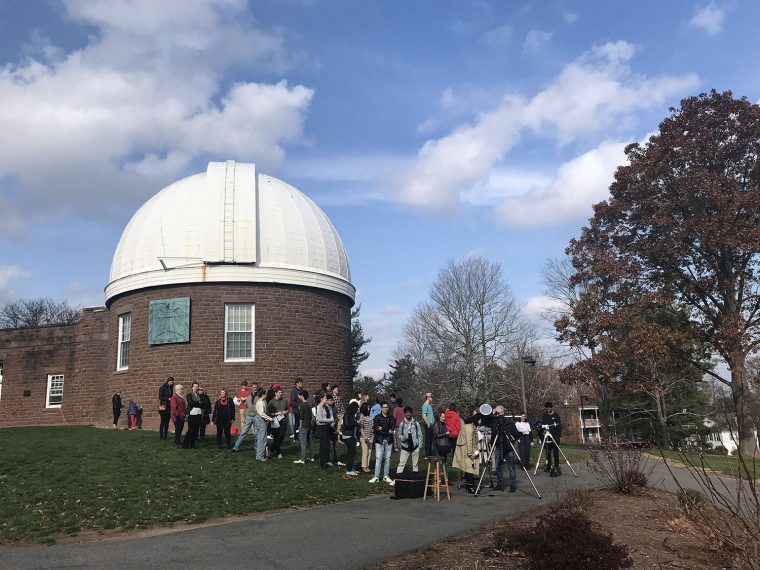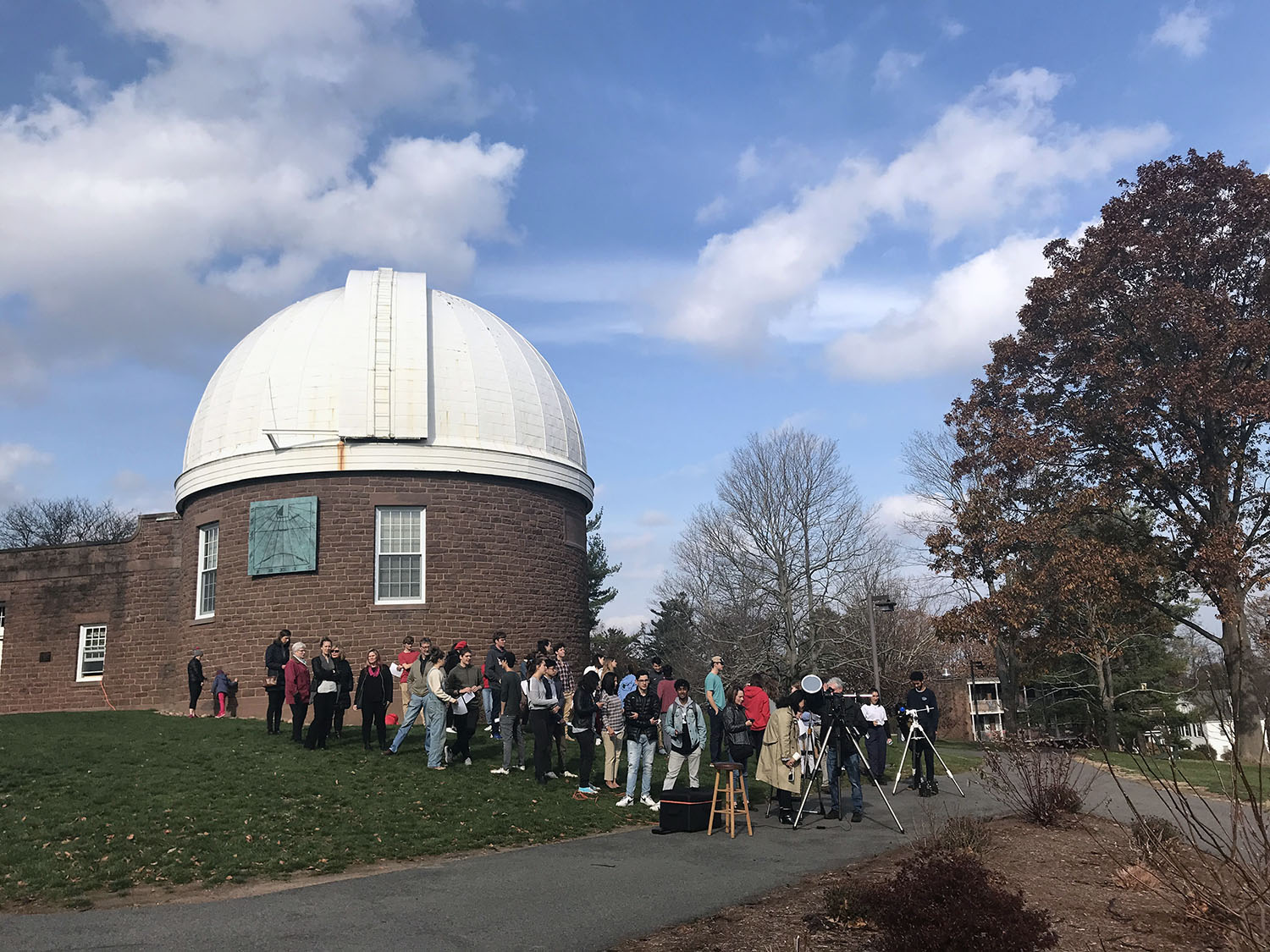Students, Faculty, Community Observe Rare Complete Transit of Mercury


For only the seventh time since Wesleyan’s founding, the planet Mercury passed directly in front of the sun, from the perspective of Earth—and Wesleyan served as a gathering place from which to learn about and observe the event. Faculty and students from Wesleyan’s astronomy department, as well as others from the University and the greater Middletown community, gathered outside the Van Vleck Observatory on Nov. 11 to witness the transit through three telescopes.
The mild weather and partly cloudy conditions—particularly at the beginning and end of the transit (which lasted from 7:35 a.m. to 1:04 p.m.)—made for good viewings through the University’s general-purpose 8-inch telescope, as well as its hydrogen alpha solar telescope, which allows users to observe solar prominences. A second solar telescope, owned by John Sillasen, MALS’07, a local amateur astronomer and member of the Astronomical Society of Greater Hartford, was also available to use as part of the event.
Gilberto Garcia ’20, an astronomy and physics major, was assisting with one of the solar telescopes. “Just seeing Mercury in general is a pretty rare occurrence, so I was pretty excited about it,” Garcia said. Viewed from a telescope, Mercury appeared as a small dot on the sun’s surface.
The event attracted a wide range of people, including many Wesleyan students. Also in attendance were students of all ages (due to the fact that many schools and businesses were closed for Veterans’ Day), said Bill Herbst, John Monroe Van Vleck Professor of Astronomy. “People have been bringing their kids, and kids have been bringing their parents.”
Only 55 transits of Mercury have ever been recorded since humans first observed one in 1631. But, said Seth Redfield, associate professor of astronomy, to be in a location that can witness the entire event (as opposed to a location that can witness just a portion of it) “is quite rare. The next time that will happen at Wesleyan will be in 2049, although we will see partial transits of Mercury in 2032 and 2039,” Redfield said.
As part of the event, a livestream of the transit from the Galileo National Telescope at the Roque de los Muchachos Observatory in the Canary Islands was shown on a television inside the Observatory’s library.
Also on view in that space were rare books from the Special Collection and Archives about 18th- and 19th-century Mercury transits. Among them were An Account of the Voyages Undertaken by Captain Cook, which describes Cook’s journey to New Zealand to observe the 1769 transit of Mercury; an 1814 elementary astronomy and geography primer from Middletown; and an archival Argus article describing the May 1878 transit of Mercury.
Transits of Mercury and Venus have been used for various scientific purposes, including measuring the scale of the solar system (and hence of the universe), and determining new information about planets, Redfield said. However, the Wesleyan viewing was not about performing any scientific analyses or experiments; it was “simply about being inspired by this natural spectacle happening above us.”
(Photos by Katie Aberbach)


